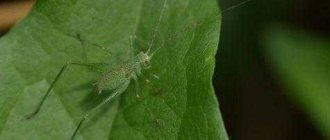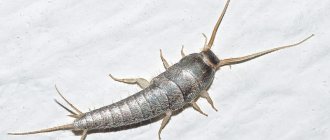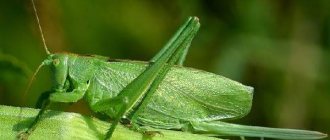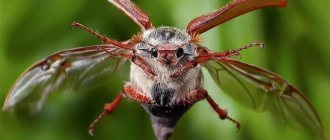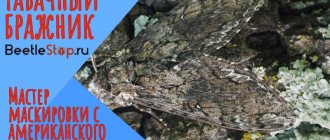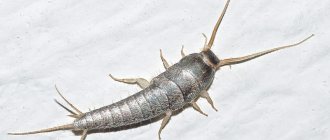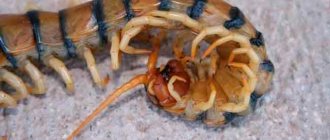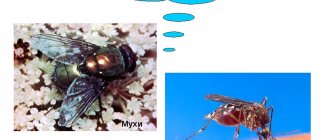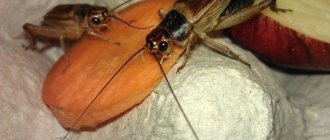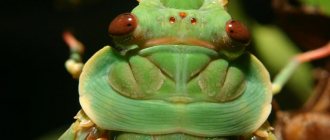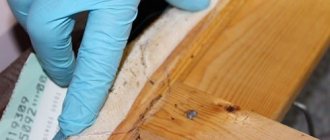The parasite (insect) is a beneficial parasite that monitors the number of pests in fields and gardens, preventing them from breeding in large numbers. The insect received this name because it lays eggs in the body of the victim, sitting astride it, while bending its elastic abdomen with the ovipositor well. The mechanism of nature for maintaining the numbers of many species of individuals is so intricate that it can be difficult for people to unravel it without harming themselves and the natural environment.
Insect riders: general information
The description of these parasites is quite interesting. The diversity of insect forms is combined with the abundance of their varieties. The largest species reaches 5 cm in length, and the smallest – up to 0.5 mm. Riders have long antennae, their bodies are very thin. They are often black with gold and red patterns. Most pests have colorless wings, but wingless specimens can also be found. Females carry an ovipositor on the back side, which can even exceed the length of their body.
Habitat and lifestyle
Most species of ichneumon live in tropical climates. Only a few representatives are able to coexist in Russian latitudes: mimarommatids, mutilids, gallworms, chalcids, evanioid wasps, typhiids. Most often, the parasite can be found in places of high humidity: rivers, swamps, bets. In agriculture, proctotrupe parasites are used to control pests.
Long-tailed wasps are diurnal and at night they hide in the grass, under leaves and tree bark. They identify their prey by smell, sound and subtle vibrations in the air. The parasite is not aggressive, but during the breeding season it flies out to hunt.
This is interesting! Riders do not form nests and do not gather in one place as a whole family. After all, the female needs to constantly be in search of a potential victim and roam. The exception is pompilids (living in the USA), which settle in the ground near roads.
The process of laying eggs
Such parasites are treasure hunters by nature. Distinguished by their excellent sense of smell, they run along dried up tree posts and look for walled-up larvae of longhorned beetles and golden beetles under the bark. At times, riders (insects) fly around the trunk in a curve, looking for the place where a large beetle larva was buried under the bark. And it’s even difficult to imagine how they can feel the larva through such dense bark.
Having found an area, the parasite settles on the bark of a pine tree and begins to pierce it with its ovipositor. Therefore, in most ichneumon races the ovipositors are enormously long; in some species they are even 7.5 times longer than the body. This is a whole drilling device. At first, the insect removes the “case” in which its “installation” was stored to the side, then it stands “on tiptoe” and slowly screws a thin sting into the bark. Along with this, the parasite is forced to spin, screwing the ovipositor deeper.
The drilling operation sometimes lasts several hours. Thanks to its special structure, the thin ovipositor easily passes through the thick bark of a tree, piercing into a hidden prey larva at a depth of 2-3 cm. Then the egg passes through this ovipositor.
What kind of wasps are found in Russia?
Crabronids (sand wasps)
Compared to the tropics, the Russian climate is poorly suited for most riders. And yet, in Russian latitudes they are also found, although less frequently. The most common types:
- Mimarommatids. A tenacious detachment, whose representatives live even in the subantarctic. They lay their eggs on the eggs of other arthropods.
- Mutillids (German wasps) are distinguished by their attractive appearance and bright colors. Over 4 thousand species of mutilids are found in nature, and in all of them the males are larger than the females. The size does not exceed 3 cm, and the body is covered with hard hairs. They lay eggs on wasps, bees and flies.
- Nutcrackers. Like relatives, they lay offspring on insects. Adults feed on plant juices.
- Proctocorpoid riders. An adult has a microscopic body length of a maximum of 5 mm. In agriculture they have found application as a means of biological protection against pests.
- Chalcides. One of the most numerous orders, which includes up to 200 species. Its representatives are highly valued in agriculture because they destroy those insects that pose a threat to pollinators.
- Evanioid wasps. They differ in their special body structure. Their abdomen is raised from the chest. They leave offspring on other types of wasps, on cockroaches and sawflies, for which they have gained fame as protectors of the forest.
- Typhia. About 20 species are found in Europe, and another 30 in Russia and the CIS countries. The body length of an adult does not exceed 1 cm. They usually have a black body color and brown wings. They prefer to lay eggs on beetles: dung beetles, May beetles and others. A rare case of symbiosis, since the victim does not die immediately, but continues to coexist with the wasp larva.
For your information! In the United States, the most common species is pompilidae (road wasps), which live in nests that are built in the ground, often along roadsides. They lay their eggs mainly on large spiders. In total there are about 4900 species of pompilids.
Crabronids (sand wasps) are common in Europe, over 600 species in total, but in total there are about 8 thousand varieties known, found throughout the planet. They usually make holes in the sand, where larvae are raised in nests. Food (bees, other wasps, other hymenoptera) is delivered to them by adult individuals, paralyzing the victims with their poison.
The remaining very numerous families of ichneumon wasps prefer the hot and humid climate of the tropics and subtropics. In the relict forests of the Amazon you can find unique insects up to 8 cm in length. It is noteworthy that scientists still continue to find new species, while a considerable number of unique insects are so rare that they can be classified as endangered.
Types of riders (insects)
There are many varieties of such parasites: very small (less than 1 mm) and quite large (more than 2 cm). Some have an ovipositor several times wider than itself, while others have it tiny. There are individuals that destroy pest eggs, while other species parasitize living larvae, even overwintering in them. Some paralyze the victim before laying eggs, others do not.
Most adult insects feed on flower pollen (phacelia, dill), nectar, hemolymph of the victim, or sweet secretions of aphids. Many species do not feed at all, since they have formed eggs that only need to be laid. Of course, the female lays the eggs, and only she has the ovipositor.
Lifestyle and habitat of long-tailed wasps
The predominant habitat of most of the 100 thousand species of ichneumon wasps present today is the tropics. In temperate latitudes (in Russia) only a few varieties can be found. What they all have in common is the laying of eggs or larvae on or directly into the body of caterpillars and other insects. Not everyone is capable of stinging.
Wasp wasps do not look too threatening, especially those found in Russia. Their size ranges from 3 mm to 3 cm in length, and the chance of meeting the largest representatives is extremely low due to their extreme rarity. All types have different colors: from translucent to rich black.
For your information! The insect has 6 legs, an elongated abdomen ending in a sharp ovipositor, a thin waist, transparent or colored wings, most similar to the wings of a dragonfly. There are species of wasps without wings at all, very similar to ants. A wasp with a long tail looks interesting.
Riders do not have a sting. Instead, there is a long ovipositor. However, the insect is quite capable of causing harm, since a special poisonous secretion is released from the ovipositor. Having pierced the skin of the enemy with its sharp end, the wasp injects poison, which has a paralyzing effect, although it does not pose a danger to the life of the insect. All riders are parasites, which are divided into 3 groups:
- ectoparasites that attach eggs and larvae to the body surface of other arthropods;
- endoparasites that introduce eggs into the body of other insects, using paralyzing poison;
- superparasites that are capable of infecting their own kind.
Eulophus
Such a parasitic ichneumon is an external group insect of the winter moth caterpillars, some specimens of butterflies, the ancient moth, leaf rollers, cutworms, moth moths, fruit moths, and others. At different periods, the death of winter moth caterpillars was noted at 27-37% from this parasite.
The size of an adult eulophus is no more than 2 mm. His body is silver in color. The ichneumon pupae overwinter in groups near the remains of the larvae, on fallen leaves, and rarely in the surface layer of soil under wood.
Beneficial ichneumon insects fly out of cocoons after overwintering, in the second half of May, at the stage of mass flowering of cherries, pears, mid-season varieties of currants, apple trees, cherries and plums. The flight of the parasite lasts approximately 2 weeks and ends at the beginning of the summer season. Eulophus are fed with nectar from weeds and flowers of fruit crops in garden plots. Since the winter moth caterpillars are absent from the garden at this time, the insects look for the larvae of other pests (leaf rollers, cutworms) and infect them.
By August, the larvae of the new generation have already finished feeding, pupate, firmly attaching themselves to the leaf, and after leaf fall ends, they move to the winter hut in fallen leaves or make their way into the surface layer of the earth.
Harm and benefit
By attacking pests of trees and plants, riders provide significant assistance in their extermination. Some species of these beneficial insects are even protected by the state as valuable helpers. They control the number of harmful insects, thereby establishing balance in nature.
Thanks to the work and active participation of parasitic riders in the destruction of harmful insects, agricultural workers and ordinary plot owners can reduce the use of toxic substances and chemicals in their beds. This has a positive effect on the quality of the harvest and the environmental situation.
Often riders can be found in warehouses of grain and bulk products. There they look for their victims - barn worms and food moths. In rare cases, if they fail, they can lay eggs in food products, which will lead to damage to the goods and damage to humans. But, given the number of pests destroyed, minor sabotage on the part of the parasitic rider will not spoil its image in the eyes of people. Therefore, when you see these strange insects with a long sting-tail in your garden or garden, do not rush to destroy them.
Panisk
These are large parasitic insects. The riders look like huge red mosquitoes, they fly into the light of a lamp and are distinguished by short ovipositors. 40 species of nocturnal moths parasitize caterpillars, including winter worms and cutworms, which cause considerable damage to winter crop plantings. They attach 3 eggs to the back of the caterpillars, and the larvae soon hatch from them and press tightly against the pests until the period when they need to weave a pupa and pupate.
Zombies among animals: wasp wasp, woodlice sucker and fungus that causes suicide in ants
Movies about zombies scare us because it is almost impossible to escape infection. The corpses with empty eyes and foaming saliva are somewhat reminiscent of those infected with the rabies virus. But this virus is actually a parasite that manipulates the host's behavior for its own purposes. It also causes aggression in the infected person in order to force him to spread the virus through bites. But not only viruses do this, but also quite tangible organisms - insects, fungi, worms and crustaceans.
Climb to explode
Caterpillars can be considered champions in the number of microorganisms and insects that control their minds.
The “zombie virus” is a baculovirus microorganism that sends caterpillars from Lancashire in north-west England to certain death. It blocks the caterpillars' natural aversion to sunlight, forcing them to climb to the tops of plants, where they quickly die. Moreover, the baculovirus literally explodes from the corpse of its host to enter the body of a new victim.
The virus infected the caterpillars of oak eggar, a common moth found in many heaths and grasslands across the British Isles. The discovery was made when scientists began to notice too often the skins of dead caterpillars hanging from the tops of bushes in the Winmarley Moss Nature Reserve in the city of Hastang.
Healthy caterpillar
Similar observations have been noted by scientists throughout the region. According to Dr Miller, who led the study into this strange phenomenon, it is completely unusual for these caterpillars to climb tall bushes and be exposed to the sun because the heather and blueberries they feed on are away from sunlight. Researchers have found that baculovirus alters insects' response to light early in infection. In later stages, the parasite turns its host into a zombie-like creature, forcing it to feed continuously before ascending to higher, more open areas. The virus actively reproduces in almost every cell of the caterpillar's body. When a caterpillar dies, it undergoes a natural decomposition process in which its exoskeleton disintegrates. Each part of the caterpillar contains a baculovirus.
Horse killing riders
Some species of parasitic wasps of the Glyptapaneteles species, which are also called “ichneumon wasps,” lay their eggs in the bodies of other insects, for example, in the caterpillars already described above. The parasitic wasp injects about 80 eggs into the host at a time, along with a poly-DNA virus and a small amount of poison, which paralyzes the caterpillar until the wasp lays eggs. The virus helps them suppress the host’s immune system so that it fully adapts to the function of growing larvae and does not turn into a pupa. After numerous studies, entomologists came to the conclusion that wasp toxins contain a special virus, or more precisely, nudivirus (virus-like particles - Hi-Tech), which helps wasps suppress the immune system of caterpillars. It is produced in the ovaries of a wasp.
Scientists believe that the genes that control the formation of these particles were acquired by the ancestors of wasps from a real virus, which was integrated into their genome 100 million years ago.
Caterpillar of the Thyrinteina leucocerae butterfly with Glyptapanteles pupae
The hatched larvae grow and develop inside the unfortunate victim, feeding on its lymph without injuring the internal organs. After which the caterpillars leave the body, attach themselves to a leaf nearby and pupate. But two or three larvae remain inside to control the caterpillar. Under such control, instead of continuing its development, it remains in place and selflessly protects foreign larvae from other insects. When young riders are born, she dies.
Darwin believed that the existence of organisms such as Glyptapanteles contradicted one of the central tenets of natural theology, which views the study of nature as a way to demonstrate the benevolence of God. He could not convince himself that God could create insects that feed on the bodies of living caterpillars.
Riders treat spiders no less horribly. If the arachnid is unlucky, it will become a carrier of the larva, and it will feed on its blood for two weeks. At the same time, the spider, suspecting nothing, will live its former life. But the time will come when the larva will need to pupate, and then it will inject a special neurotoxin into the spider’s brain, which will force it to weave an unusual web. When the job is complete, the larva will eat the spider and use the web to pupate.
A species of parasitic flatworm, Leucochloridium paradoxum, invades the snail and develops in its body. A larva emerges from the eggs and emerges from the eye tentacles of its victim in the form of a bright growth. A blind snail loses its vigilance and no longer hides from danger. Birds can easily spot prey thanks to these new, bright “eyes.” This is how Leucochloridium paradoxum achieves its goal - it enters a new organism, where it lays its eggs. Together with the droppings, they end up in the grass, where a new cycle of their life begins.
Bloodthirsty mushrooms
A species of entomopathogenic fungus, Ophiocordyceps unatellis, modifies the behavior of ants to ensure that their spores are distributed as widely as possible. Translated, the name of the parasite sounds like “one-sided Cordyceps.” This fungus enters the ant's body through the respiratory openings, where it begins to feed on soft tissues. The enslaved ant is forced to leave its nest for a more humid microclimate favorable to the growth of the fungus. The ant eventually climbs to the top of the low bush and bites into the stem with its jaws. Then the mushroom kills the unfortunate man and eats his body. Thanks to this, a few days after the ant's death, the fungus releases a fruiting body through the base of the ant's head, turning its corpse into a launch pad from which it can release its spores and infect new insects.
Stages of ant infection with the fungus Ophiocordyceps unatellis
A study published in 2022 showed that the commonly held belief that the fungus affects the ant's central nervous system is wrong. The brain of zombie ants remains untouched by the parasite, and O. unatellis is able to control the actions of its host by penetrating and surrounding muscle fibers throughout the ant's body. Essentially, it turns the infected ant into an external version of itself. Thus, zombie ants remain partly insects, but, on the other hand, become a fungus.
Other entomopathogenic fungi Entomophthora muscae, which means “fly killer” in Greek, enters the exoskeleton of flies through one of the many cracks in their “armor.” The first thing the mushroom does is grow into a specific area of the brain that controls the behavior of the fly, causing it to land on a nearby surface and crawl as high as possible. Infected flies rise to a certain height, attach themselves to any plant and take a “death pose” with their belly up, optimal for dispersing spores. Eventually, the fungal cells infect the fly's entire body and it dies.
To make this discovery, Penn State scientist David Hughes assembled an international team of entomologists, geneticists, computer scientists and microbiologists. The goal of the study was to look at the cellular interactions between O. unatellis and Camponotus castaneus ants during a critical stage of the parasite's life cycle—the phase when the ant anchors itself to the bottom of a leaf with its powerful mandibles (jaws).
Using electron microscopes, the researchers created 3D models to determine the location, abundance and activity of the fungi inside the ants' bodies. The tissue pieces were sampled at 50 nm resolution, using a machine that could repeat the slicing and imaging process at 2,000 frames per minute over a 24-hour period. To analyze this huge amount of data, the researchers turned to artificial intelligence, and a machine learning algorithm learned to distinguish between fungal and ant cells. This allowed the researchers to determine how much of the insects' bodies could still be considered an ant and how many of them had already been transformed into a fungus. O. unatellis cells have spread throughout the ant's body, from the head and thorax to the abdomen and legs. Moreover, all these fungal cells were interconnected, creating a kind of collective biological network that controlled the behavior of the ants.
Typically in animals, behavior is controlled by the brain, which sends signals to the muscles, but the study showed that the parasite controls the host's behavior without entering the head like a puppeteer.
Corpse of an ant with mushrooms protruding from its body
The study showed that the fungus secretes tissue-specific metabolites and causes changes in host gene expression, as well as atrophy of the ant's lower jaw muscles. Altered host behavior is an extended phenotype of microbial parasite genes that is expressed through the host. But it is still unknown how the fungus achieves complete control over the behavior of its victim.
Cymothoa exigua is a unique parasite that not only eats parts of its host's body, but also completely replaces what it eats. The woodlouse penetrates the gills and settles into the body of the fish, the spotted pink snapper. She eats the tongue of her victim, and then begins to feed on mucus and, however, regularly “works” instead of the tongue. Currently, it is believed that Symothoa exigua does not pose a threat to humans. However, some researchers argue that there is still a risk of being bitten.
Woodlice, which replaced the fish's tongue
The woodlice that turns crabs into nannies
Sacculina is a parasitic arthropod from the crustacean subphylum. He really enjoys managing the crabs. Sacculina larvae are planktonic organisms that travel through salty seas and oceans. Four to five days after birth, females begin to develop a small chitinous shell (cyprisoid stage). From this moment on, the sacculina has only one goal - to quickly find a suitable crab, gain a foothold on it and calmly develop further. Most often, sacculina is attached to the claws.
There the larvae turn into a kind of living hypodermic syringe (the so-called “kentrogon”). He pierces the shell at the base of the crab's bristly hairs and introduces the next stage of the parasite, a microscopic blob called a vermigon, into the crab's blood and digestive tract. Essentially, sacculina injects itself in liquid form. After being introduced into the shell, its active growth stage begins. The shapeless lump of cells grows greatly and reaches a size of up to 3 cm. Sacculina sucks out all the nutrients from the crab, but does not kill it. The parasite turns him into an obedient zombie under complete control. Sacculina also destroys the crab's genitals, and also changes the hormonal levels of males to make them obedient and caring mothers.
Mechanism of crab infection with sacculina
The body of a fully mature sacculina is made up of parts called internodes, which look more like the roots of a plant than an animal. Its antennae spread throughout the crab's insides, and only part of the parasite is visible from the outside - the female reproductive organ, which protrudes from the abdomen. At this sac-like stage, sacculina becomes sexually mature. At the point of attachment to the abdomen, a tiny hole opens through which the male enters the sacculina, which looks like the female larva before inserting into the crab. It attaches itself to it and remains for the rest of the crab's life, producing sperm and fertilizing eggs daily. Moreover, each female sacculina has two entrance channels in which two males can live simultaneously.
Sacculina lays fertilized eggs where a healthy female crab would carry her own clutch. And the unfortunate crustacean takes care of her in the same way as she would take care of her offspring. A crab, zombified by sacculina, obediently cleans its clutch of algae and protects it from predators and other parasites. It is surprising that such crabs live longer than uninfected ones.
Some experts say the so-called chronic wasting disease, which affects deer and elk in 24 U.S. states and two Canadian provinces, could infect humans in the future like something out of a zombie apocalypse.
The virus itself affects the animal's brain, spinal cord and tissues, causing aggression, loss of concentration, drooling, lack of fear of people and lethargy. This phenomenon has become a topic of conversation lately as it continues to spread across North America. Most likely, this is just a mutated rabies virus, but the disease has not been fully studied.
Beautiful and deadly
Nature created the emerald wasp, which turns cockroaches into zombies. A female wasp mates only once in her life. After mating with dozens of fertilized eggs, the wasp searches for the cockroach using sight and sound and then attacks.
But cockroaches are six or more times larger than wasps, so the accuracy of the sting strikes is extremely important. The wasp stings the cockroach in the chest and injects gamma-aminobutyric acid with taurine and beta-alanine. GABA is a neurotransmitter that blocks the transmission of motor signals between nerves and, along with two other chemicals, temporarily paralyzes the cockroach's front legs.
Wasp and cockroach fight
She then injects a sting containing a toxin into two areas of the cockroach's brain, the ganglia. The wasp uses special sensory organs at the tip of its stinger to locate the exact areas of the cockroach ganglia to attack. Once the venom is activated, the victim's entire central nervous system becomes controlled as it blocks key signals to the brain. This causes the victim to lose the sense of self-preservation, so that the wasp, being too small to carry the cockroach, leads it, like a dog on a leash, to its nest, where it lays an egg in the insect's stomach and seals it inside, and then flies off to find a new victim.
After two days, the wasp egg hatches and the newborn larva begins to destroy the cockroach. The larvae feed on hemolymph, which contains nutrients equivalent to human blood. They also consume all the organs in the abdominal cavity while the cockroach is still alive. Once all the organs are eaten, the larva consumes the cockroach's nervous system and deposits an antimicrobial secretion on the inner walls of the cockroach's corpse. Over the next month, the larva turns into a pupa inside the cockroach's corpse and, reaching the next stage of development, breaks through its shell and climbs out.
Zombies are not just horror movie props; they are common in nature, whether we like it or not. There are many examples of mind control parasites that can attack the host's nervous system, enslaving their victims in the most twisted ways. Is it possible that these mechanisms will also apply to humans? We are also just a biological species, one in a million, so zombification can affect us too.
Rissa
This species of riders has a large ovipositor. They infect pests that feed on wood. The parasite is also common in Russian forests. The insect is black in color with yellow stripes on the abdomen and spots on the chest. They have a well-developed sense of smell, which helps them detect longhorned beetles and horntail beetles that live under the bark of a tree in a recess of several centimeters. The ichneumon ichneumon (insect) drills a hole in the bark for a long time. Risses lay eggs directly into the passage eaten by the horntail larva. The larvae of these beneficial parasites first feed on the host's hemolymph and then consume internal organs.
Peculiarities
The sizes of adult individuals range from 2 millimeters to 4 or more centimeters. The abdomen is elongated, in females it has a long ovipositor (sometimes up to 17 centimeters). The head antennae are also elongated. The wings of most representatives are well developed.
After mating, females lay eggs directly on the body of the future host. Sometimes in the body or near the prey insect. Some larvae are selective in choosing a host, while others parasitize various insects. The death of the host occurs before pupation, less often after spring awakening. The rider injects special viruses into the victim’s body to subdue the immune system. And at the same time he diligently provides himself with fresh food.
The viability of the host is preserved, even if only a tenth of the mass of its internal organs remains intact.
Food includes caterpillars, beetles, ants, and wasps. Less common are spiders and scorpions. There are species that parasitize tahini flies. This is the so-called secondary parasitism.
Adult equestrians are active at night and are very sensitive to air humidity. They prefer to settle near bodies of water. Here they can be found on flowering herbs. The population increases sharply during rainy summers.
The average lifespan of adults is from three to ten months (in the case of wintering in the adult stage).
Aphelinus, aphidiid, aphidius
They are small parasitic parasites mainly on aphids. When an insect detects an aphid, it tucks its abdomen between its legs, quickly pierces it with its ovipositor and jumps away so that it does not spray it with the protective secretions of its tubes. Aphelinus lay only 1 egg in aphids. Their larvae form in it, and over time it turns into a mummy.
What to do if a wasp bites a person?
In some cases, hypersensitivity to the sting of a parasitic wasp wasp has been recorded. An allergic reaction occurs in young children and people with reduced immunity. To prevent anaphylactic shock or angioedema, it is recommended to provide first aid to the victim in a timely manner.
Symptoms and consequences
Most often, a wasp sting does not show up on the skin. But with a strong concentration of toxins that the insect injects during an attack, a slight redness appears. Itching and swelling may also occur. The most dangerous consequence of an encounter with a rider is considered to be scratching the wound. In this way, a person can independently introduce an infection. Symptoms of infection are swelling and tearing of the stung area, the formation of an abscess, and a rash.
If redness does not go away after 5 days, you should consult a doctor. To determine the diagnosis and prescribe treatment, the victim is given a referral for a scraping from the bite site, a general blood and urine test.
First aid
After a wasp attack, you should wipe the bite site with an antiseptic. Fukortsin, Miramistin, hydrogen peroxide or alcohol (vodka) are suitable for this. If pain occurs, you can take analgesics and antispasmodics. To prevent the development of swelling, redness and rashes, anti-inflammatory medications are needed.
Ageniaspis
Considered one of the original designs. The parasite (insect) specializes in infecting the apple moth egg, however, it does not mature for a long time, but waits for the caterpillar itself to develop. Then from this egg many twins appear. From the eaten larvae, 150-200 ageniaspis are hatched.
The record holder for fertility is plastigaster. It mainly parasitizes the Hessian grain fly. The female infects both young larvae and eggs, laying up to 3000 eggs during her life.
No less popular is encarsia, which lays its eggs on the larvae of the greenhouse whitefly. Almost all greenhouse agricultural companies propagate it.
How dangerous are wasp stings?
If attacked by one wasp, a healthy person will not have any special problems, but if several individuals attack, the consequences will be serious and the toxic reaction will be strong. The consequences will depend on the amount of poison entering the body. A lethal dose of poison is considered to be from the bite of 500 insects.
The situation is different for people with an allergy to the venom of Hymenoptera; even a single insect bite can lead to death. Swelling of the larynx can cause suffocation, and the reaction can also affect the lungs. Allergy sufferers may experience cramps, swelling, rapid heartbeat, and in some cases even loss of consciousness. We must remember that with the first sting of a wasp, an allergic reaction will not appear, but with subsequent attacks the reaction will intensify each time. The most acute reaction is anaphylactic shock, when when bitten a person loses consciousness and the functioning of various organ systems, primarily the cardiovascular system, is disrupted.
First aid for a wasp and other hymenoptera bite consists of a number of mandatory measures that must be taken. First you need to determine which hymenoptera inflicted the bite: a bee, a wasp or a bumblebee.
Do not forget that wasps do not leave a sting, but all other Hymenoptera leave one in the body. First you need to disinfect the wound and the instrument that will be used to remove the sting, if it is left. This is done in order to avoid infection in the wound. The tool can be tweezers. Medical alcohol, hydrogen peroxide, iodine and brilliant green can act as a disinfectant. Under no circumstances should you squeeze out the poison, as this can lead to infection.
The next step is to stop the poison from spreading throughout the body. To reduce the toxic reaction, you should drink more fluids. Sweet tea or sweetened water is best. It is recommended to apply ice or a cold wet towel to the bite site; such actions will slow down the absorption of the poison. You can draw out the poison using a piece of sugar moistened with water. Allergies can be stopped by drugs such as Suprastin or Claritin. Lemon juice will help reduce pain; it also helps relieve swelling. You can also add a piece of apple, a cut onion or a plantain leaf. Calendula solution helps a lot; you can buy it at the pharmacy. You should not drink alcohol, as it will aggravate the body’s reaction and increase swelling.
Helping a child with a wasp sting should begin by cooling the wound with ice or a wet towel. The next step is to remove the sting (if necessary) and disinfect the wound. Next, you need to carefully monitor the child’s condition in order to notice the appearance of an allergic reaction, if any. And don’t forget to increase the amount of fluid you drink.
What do beneficial parasites usually eat?
Most species of such insects do not eat meat. The adult rider (insect) eats the nectar of flowers and hunts to continue its lineage. There are mature individuals that do not feed on anything at all. However, parasites are very fond of drinking, gathering near lakes and feasting on dew. They exist for no more than 2 months, some of them are evening or nocturnal insects. But at the same time, the favorite and main food of riders are:
- mealybugs;
- cicadas;
- sawflies;
- scale insects;
- aphid;
- bedbugs;
- pest butterflies;
- flies;
- whiteflies;
- burners;
- beetles;
- blood aphid.
Many will be interested to hear the answer to the question: “Is the insect rider dangerous for humans?” Absolutely not, and on the contrary, these parasites play an important role in nature, protecting garden plots with fruit trees and vegetables from the invasion of various pests.
Nutrition
Adult megarhyssa perlata, which prefer to consume the nectar of flowers themselves, introduce their larvae into pests that breed in the bark of trees, depositing them in the passages made by these insects.
And ichneumon larvae , being extremely active in search of food, find their own prey, attaching themselves to the body of the victim. Most adult parasites do not eat the flesh of other insects, and some do not even eat anything at all. But they are looking for a suitable object to saturate their larvae.
Prey for parasites can include wasps, ants, beetles and caterpillars, and in some cases scorpions and spiders. Braconids are used to feed barn moths and leaf roller butterflies, but they can also harm people’s supplies, spoiling spices, confectionery, dried fruits, grain and flour.
What to do after a bite
After a wasp attack, you need to disinfect the wound and neutralize the effect of the poison. Use medical alcohol, ammonia, tincture of valerian, motherwort, honey, calendula. Apply baking soda paste, laundry soap foam, toothpaste, and shaving foam to the sore spot. Wipe with aloe juice and chamomile decoction. Further actions depend on the clinical picture.
If a severe allergic reaction occurs, you should take an antihistamine - Claritin, Diazolin, Fenistil, ElCet. Treat the skin with ointment, cream - Fenistil gel, Advantan, Elokom, Sinaflan, Triaccutane. Treatment should not exceed 5 days. Symptoms disappear within 2-3 days. In difficult situations, you need to seek help from specialists. The ichneumon wasps that live in our area rarely provoke severe allergies.
How to deal with insect pests: plant protection methods
In order not to disturb the natural balance, try to give preference to means of controlling plant pests that would not harm beneficial insects and birds. The main thing in protecting plants from pests is a system of preventive measures: it is easier to prevent a disease than to treat it. The main role is given to plant care activities, from the purchase of planting material to wintering or storing in storage.
Crop rotations prevent the accumulation of pathogens and pests in the soil and create conditions for normal growth and development of plants. It is known that nasturtium, mustard, and calendula, which release phytoncidal substances, help cleanse the soil of infection. Therefore, it is recommended to alternate planting bulbous plants with these annuals. The plants are returned to their original site after 5-6 years.
How else to deal with plant pests in the garden? An important point is soil preparation. In poorly drained, humus-poor soil, plants are more likely to get sick, grow weakened, and are attacked by pests. Before planting a flower garden, the area must be cleared of debris: branches, stones, wood chips, etc. Deep digging of the soil in the flower garden in the fall will help get rid of the larvae and eggs of harmful insects (cutworms, wireworms, earwigs) overwintering in it. When using composts or manure, you need to be careful not to introduce Mayweed, which often settles in compost heaps, into the flower garden. The larvae must be carefully selected and destroyed; they can be fed to chickens. Boxes for seedlings must be disinfected annually (with a solution of potassium permanganate or boiling water), and the soil in them must be changed (it is better to use ready-made mixtures for seedlings).
For most ornamental plants, areas with light, loose soils are more suitable. Heavy acidic soils, which promote the spread of fungal infections, are limed. To do this, fluff lime is added in the fall at the rate of 100-200 g per 1 m2.
If you purchased healthy planting material, then there will be much fewer problems. Therefore, it is better to make purchases in specialized stores. Try to avoid thickening the plantings; in such conditions, the plants lack nutrition and excess moisture appears, which also leads to the proliferation of pests and pathogens. It is necessary to systematically remove weeds, as they are a reservoir for many diseases and pests. In addition, they thicken plantings and compete with cultivated plants for nutrients.
Plant debris (foliage, stems, fallen flowers) often become a haven for pests. You cannot leave trash near plants. Carefully rake it and destroy it.
